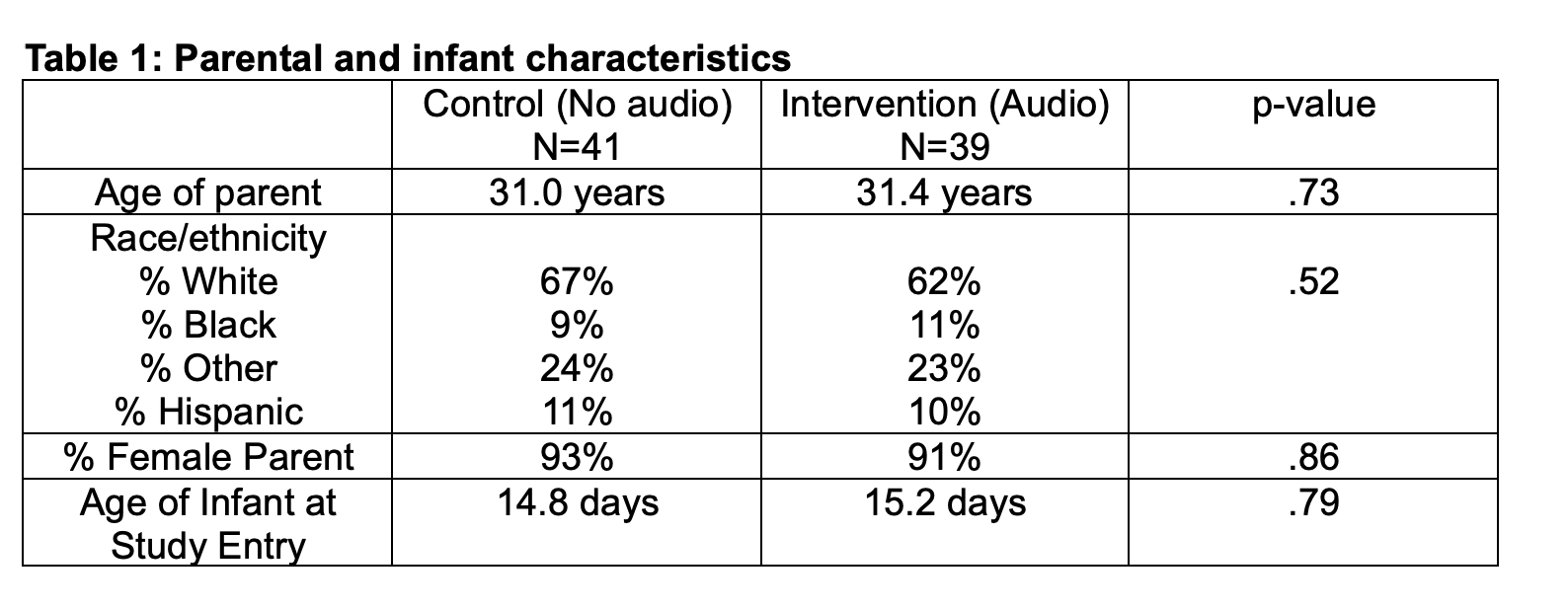Child Abuse & Neglect
Session: Child Abuse & Neglect 2
191 - Reinforcing an Abusive Head Trauma Prevention Message with a Priming Stimulus
Saturday, May 4, 2024
3:30 PM - 6:00 PM ET
Poster Number: 191
Publication Number: 191.1573
Publication Number: 191.1573

Kirsten Bechtel, MD (she/her/hers)
Professor of Pediatrics and of Emergency Medicine
Yale School of Medicine
New Haven, Connecticut, United States
Presenting Author(s)
Background: Inconsolable infant crying can lead to abusive head trauma (AHT). The Take 5 Safety Plan for Crying (Take 5) prepares parents to manage their infant’s crying and has been shown to effectively reduce AHT rates; it consists of 5 steps to take when one is frustrated with infant crying (Figure 1). Prior research has demonstrated that a priming stimulus may improve recall of related information.
Objective: This study aimed to determine whether adding a one-minute audio clip of an infant crying (priming stimulus) to the Take 5 message given to parents of newborns would strengthen recall and usefulness of this preventive message.
Design/Methods: We conducted a randomized controlled trial of parents of newborns; half received Take 5 (control group), and half heard an audio clip of an infant crying and then received Take 5 (intervention group). Parents were contacted by telephone twice: first to hear the Take 5 message 2 weeks after the newborn’s birth and the second to assess Take 5’s impact on caregiving practices six weeks later. We hypothesized that parents who heard the audio clip would be more likely to have better recall of Take 5; remember to use Take 5 when frustrated with infant crying; be more likely to tell other caregivers about Take 5; and be more likely to say Take 5 was helpful at the six-week follow up phone call. With alpha = .05 and 80% power, we needed at least 38 parents in each group to demonstrate a 25% difference between groups for the outcome of recall of Take 5 when frustrated with infant crying. Chi-square and Fisher’s exact tests were used to evaluate differences between groups.
Results: Between April 2021 and June 2023, 80 parents participated; 41 were randomized to the control group and 39 to the intervention group. There were no demographic differences between the groups, including for parents’ age, race/ethnicity, sex, or infants’ age (Table 1). There were no significant differences between groups in the outcomes of interest (recall of Take 5; remember to use Take 5 when frustrated with infant crying; be more likely to tell other caregivers about Take 5; and be more likely to say Take 5 was helpful) (Table 2).
Conclusion(s): An audio clip of an infant crying as a priming stimulus did not strengthen the recall or usefulness of Take 5 for parents. One possible explanation for the absence of a priming effect was that the recall of Take 5 was very strong for 75.6% of parents in the control group . Future study to determine if recall of Take 5 alone is similarly robust in a larger and more diverse population of caregivers is needed.



